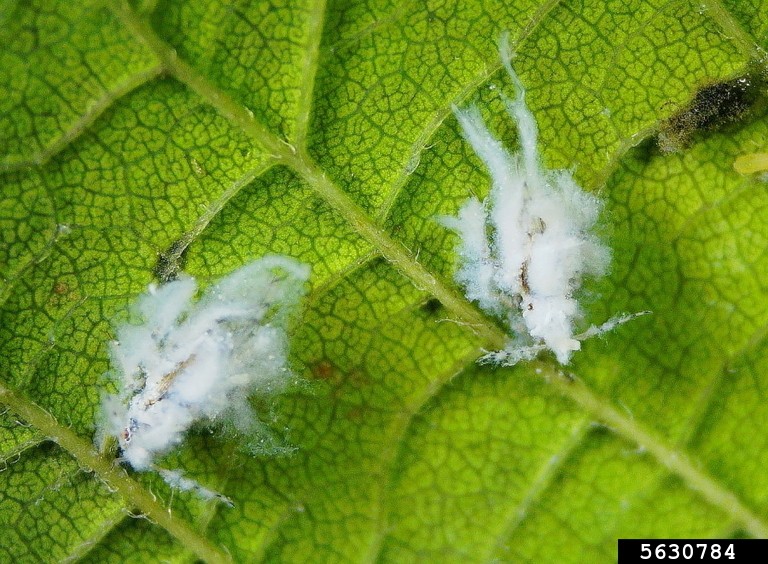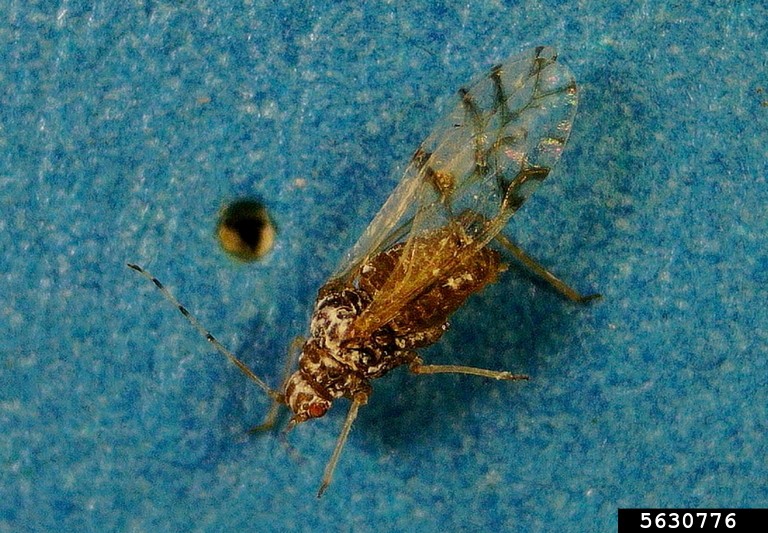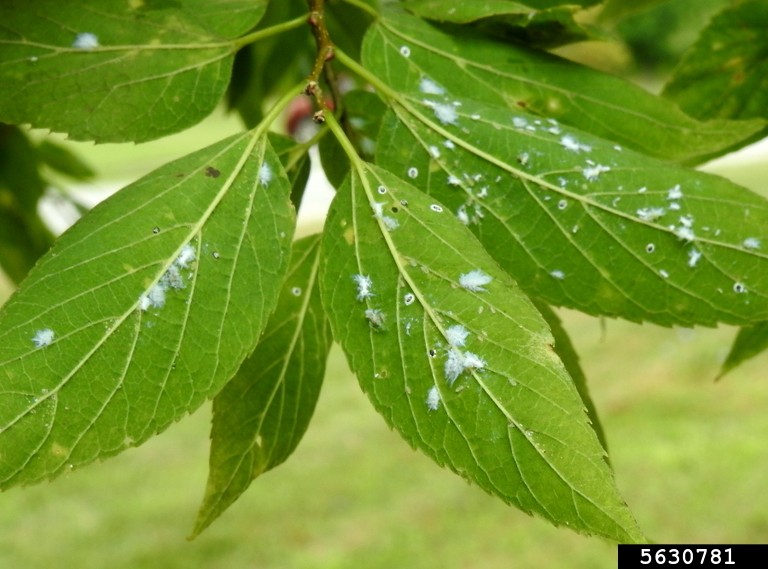Hackberry Aphid
Hackberry wooly aphid (Shivaphis celti) is an introduced insect which feeds off the sap of hackberry leaves, excreting copious amounts of honeydew in the process.
Often honeydew laden areas beneath infestations may be covered in black sooty mold growing off of the excreted sugar mixture. These aphids are not known to cause long-term damage to hackberry trees, but are primarily a nuisance pest in residential areas due to their production of honeydew.

Often the first observed sign of a hackberry woolly aphid infestation is the sticky honeydew it produces. The aphids also secrete pale wax, which covers their bodies. These woolly aphids on shoot terminals and leaves appear as fuzzy, bluish or white masses, each about 1/10 inch or less in diameter. Winged forms have distinct black borders along the forewing veins and their antennae have alternating dark and light bands.
Check for the insects to confirm that the cause of honeydew is aphids and not the citricola scale. Citricola scale (Coccus pseudomagnoliarum) is the only other honeydew-producing insect that infests hackberry. Citricola scale females and older nymphs (immatures) are brownish to gray, oval, slightly dome shaped, and occur on twig bark from fall through spring.
Because the scales are immobile most of their life and their mottled gray to brown color blends in with bark, these scales are easily overlooked. In the spring female scales produce tiny flattened, orangish nymphs that settle and feed on the underside of leaves during spring and summer, then move in fall to overwinter on bark.


Hackberry woolly aphids are most notably pests in residential or business areas as their copious honeydew production and the resulting sooty mold growth can cover sidewalks, vehicles or anything else that happens to be beneath an infested hackberry tree.
Infestation levels may fluctuate year to year, and while the aphids are not known to cause long-term damage to hackberry trees, the honeydew produced can be a nuisance during heavy infestations.
Management options may be used to temporarily knock back infestations and reduce honeydew and sooty mold growth.
Chemical control options are available and infested plants must be thoroughly treated. Contact insecticides and horticultural oils are usually ineffective against aphids with waxy protective coatings; systemic insecticides are sometimes effective in these cases. Aphids are notoriously difficult to control and nearly impossible to eradicate completely. An integrated pest management approach is usually the most effective. Predatory/parasitic insect populations usually keep aphid populations in check; insecticide applications that kill beneficial insects may result in aphid outbreaks.
What Can You Do?
In situations where using chemical control options may not be practical, managing the honeydew produced by the aphids may be beneficial. Removing personal property from beneath infested trees or cleaning items that are covered by honeydew can reduce the growth of sooty mold on personal property.
